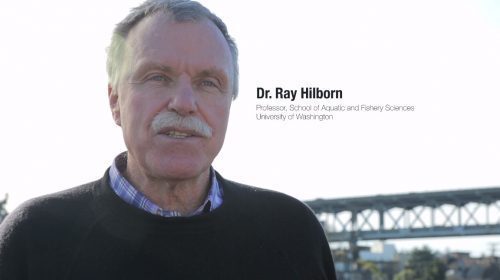WASHINGTON – September 20, 2017 – In April, a team of respected fisheries scientists led by Dr. Ray Hilborn published a study that found fishing of forage species likely has a lower impact on predators than previously thought. This conclusion challenged previous forage fish research, most notably the 2012 Lenfest Oceans Program report “Little Fish, Big Impact,” which recommended leaving more forage fish in the water to be eaten by predators.
The Lenfest task force responded to this new research with a Letter to the Editor of Fisheries Research, where the Hilborn et al. study was published. In response to this letter, Hilborn et al. wrote their own letter, which was published August 5 in Fisheries Research and is reproduced below:
Our paper highlighted that key biological relationships between forage fish and their predators were not included in the models used in the LENFEST report. These missing elements were (1) the high level of natural variability of forage fish, (2) the weak relationship between forage fish spawning stock size and recruitment and the role of environmental productivity regimes, (3) the size distribution of forage fish, their predators and subsequent size selective predation and (4) the changes in spatial distribution of the forage fish as it influences the reproductive success of predators. We demonstrate that each of these elements can have a major impact on how one evaluates the impact of fishing forage species on their predators. The LENFEST report used EwE models without these factors to determine the very specific recommendations they made about how to manage forage fish.
We certainly agree that in some cases fishing forage fish will affect their predators, but in other cases there may be little if any impact – it all depends on the biology that was not included in the models used.
This critique of our paper suggests that we are offering alternative evaluation of the impact of fishing forage fish that are, like the LENFEST recommendations, broadly applicable. We make no such claim and much of their critique is against the straw man they have constructed. We are not arguing that fishing forage fish does not affect predators. Rather we show how, in specific cases, there may be little if any impact of fishing forage fish and that general conclusions simply are not possible.
We suggest that the very specific quantitative measures proposed in the LENFEST report result from models that do not have these components and that if these elements were included in the models the conclusions would likely be different. While the authors of the letter argue that they conducted a comprehensive literature review, the specific recommendations came from their modelling, and it is the modelling we criticize and their critique makes few attempts to defend.
We stated “Pikitch et al. (2012) argued forcefully that their analysis provided general conclusions that should be broadly applied. However, relevant factors are missing from the analysis contained in their work…” Their response is that their recommendations were “tailored to the level of uncertainty and data availability of each system.” What we refer as “general conclusions” contain a set of recommendations for three uncertainty tiers, but our point is that the biology of each system is different, not the availability of data or uncertainty, and the differences in biology should be considered when evaluating management options for forage fisheries.
The specificity of their recommendations is clear – for high information situations (which would include the California Current, Humboldt Current, NE Atlantic sand eel and herring) their recommendation is “In any case, lower biomass limits should not be less than 0.3 B0, an MAX F should not exceed 0.75 FMSY or 0.75 M.” These numbers are not the result of their case studies or literature review but the result of their models that did not include a number of important elements.
Finally, we agree that situations where detailed information is lacking are challenging for management, and that is why it is important to identify species and system attributes that make systems less resilient to fishing. Low trophic level species constitute the largest potential sources of increased fish production in the world and much of the recent suggestions for “balanced harvesting” relies on significant increases in exploitation rates on trophic levels associated with forage fish. Since almost all of these potential low trophic level species would be considered in the “low information tier” the LENFEST recommendation is that new fisheries not be allowed until sufficient data are collected. Given that few countries will devote resources to research on fisheries that do not exist, the LENFEST recommendation essentially says no new fisheries on these species, and thus in effect precludes development of what may be significant food resources.
We believe the authors of our paper and the LENFEST report all accept that in some cases predators may be highly dependent on forage fish, but in other cases there may be little dependence. Management should be based upon what is known about the dependence of the predators on forage fish and the relative importance the local agencies place on maintaining high predator abundance verses the benefits of full exploitation of the forage fish. The major forage fisheries of the world are very valuable and currently intensively studied. What is needed for each of these fisheries is a new set of models that incorporate the elements that were missing from the LENFEST analysis.
Ray Hilborn, Ricardo O. Amoroso, Eugenia Bogazzi, Olaf P. Jensen, Ana M. Parma, Cody Szuwalski, Carl J. Walters

